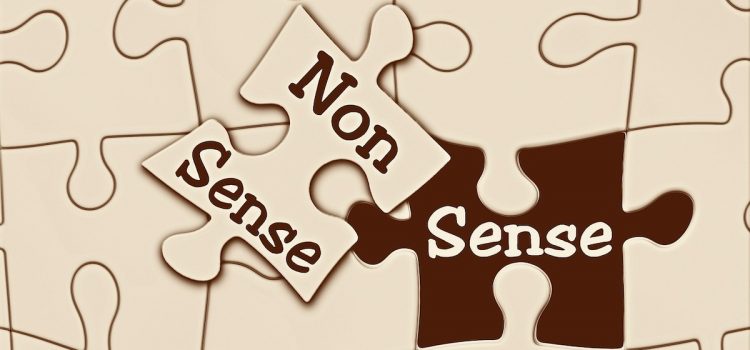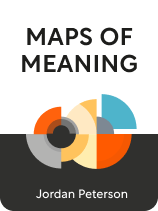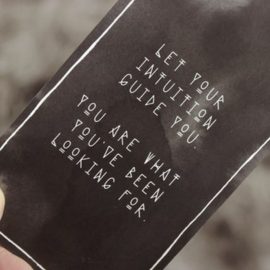

This article is an excerpt from the Shortform book guide to "Maps of Meaning" by Jordan Peterson. Shortform has the world's best summaries and analyses of books you should be reading.
Like this article? Sign up for a free trial here.
How can we understand what science doesn’t explain? How can we find meaning in our everyday lives?
For Jordan Peterson, meaning and experience are strongly connected. In his book Maps of Meaning, he illumines the path from experience to myth and, ultimately, to meaning.
Keep reading to learn about Peterson’s theory on meaning and experience.
Meaning and Experience
According to Jordan Peterson, meaning in the present comes from experience in the past. From a psychological perspective, He asks, “How do we actually navigate the world if not through scientific objectivity?” The answer is that our minds create models of the world based on both our present environment and a desired future state. When something interrupts the flow from the present to the future, our brain is forced to come up with a solution, a new “map” to get us from here to there. Peterson explains how this problem-solving process works inside the human brain, how our maps of past experience give meaning to the present, and how the cumulative lessons of experience become abstracted into the larger myths that shape our lives.
At any given moment, our brain operates from a mental model based on our expectations of the world around us. We know where we are, where we’re going, and how to get there. As long as everything goes according to plan, the brain’s logical left hemisphere is in control. However, when the unexpected happens, the limbic system takes over, making us freeze while triggering curiosity and fear. Our senses become heightened toward whatever disrupted our surroundings. The right hemisphere of the brain engages and, with it, our capacity for abstract, creative thought. The right brain solves the unexpected problem, adjusting our expectations and plans, before passing those changes to the left brain, which encodes them in language and logic.
(Shortform note: The functions of the brain’s left and right hemispheres were originally mapped in the 1930s. However, more recent research has focused on the problem-solving functions of the parietal cortex (linked to sensory integration) and the anterior cingulate cortex (linked to decision-making). The study results suggest that cognition is more complex than the model presented by Peterson. For instance, whereas Peterson links problem-solving to the heightened attention triggered by the limbic system, modern research shows that too much conscious attention to a problem inhibits the brain’s ability to solve it, while subjects who don’t focus as hard but keep their minds open are more likely to stumble on new ways of thinking.)
As an example of the problem-solving process, imagine you’re walking on a path you take so often that you’re barely aware of your surroundings. Your left brain keeps your feet moving while you daydream about something else. Suddenly, a dog barks, and you freeze. Your senses are now on alert—you look around. You see a dog running toward you, still barking. Your right brain compares this experience to previous encounters with dogs. Does it look dangerous? Does it look friendly? What’s the best way to respond? Sensory cues (the dog’s tail is wagging) lead you to guess that the dog is just excited. You kneel and reach out your hand for it to sniff.
Now that you’ve faced this unforeseen disturbance, your left brain shapes it into a story: “There’s a new dog in the neighborhood. It’s friendly.” Peterson says that repeated encounters with the dog will make it part of your familiar landscape—it won’t trigger your brain’s limbic response. Now, however, your mental map reflects a slightly different world than before.
| A Look Inside the Brain The states of mind described above, one that is goal-oriented and one that is creative, are described in psychology as telic (logic-based, unemotional) and paratelic (spontaneous, playful). Reversal Theory states that humans switch between the two depending on levels of emotional and sensory arousal. Psychologists long believed that individuals were more dominant in one state or the other, describing them as “left brain” or “right brain” people. While MRI studies confirm the left hemisphere’s control of language and task-oriented activity, as well as the right hemisphere’s involvement in interpreting new experiences, the same studies show that there’s no such thing as left or right dominance. What MRI studies do reveal is that repeated, regular exposure to new stimuli and problems increases overall cognitive performance. In particular, research on children playing video games found higher activity in regions controlling attention (right brain) and memory (left brain) than in children who played no games at all. Deliberate self-exposure to surprise has its perks. |

———End of Preview———
Like what you just read? Read the rest of the world's best book summary and analysis of Jordan Peterson's "Maps of Meaning" at Shortform.
Here's what you'll find in our full Maps of Meaning summary:
- Why myths are vital to how humans confront and make sense of a chaotic world
- How to apply the lessons of myth to live a more well-rounded life
- How the findings of neuroscience are echoed in the structure of our most ancient tales






